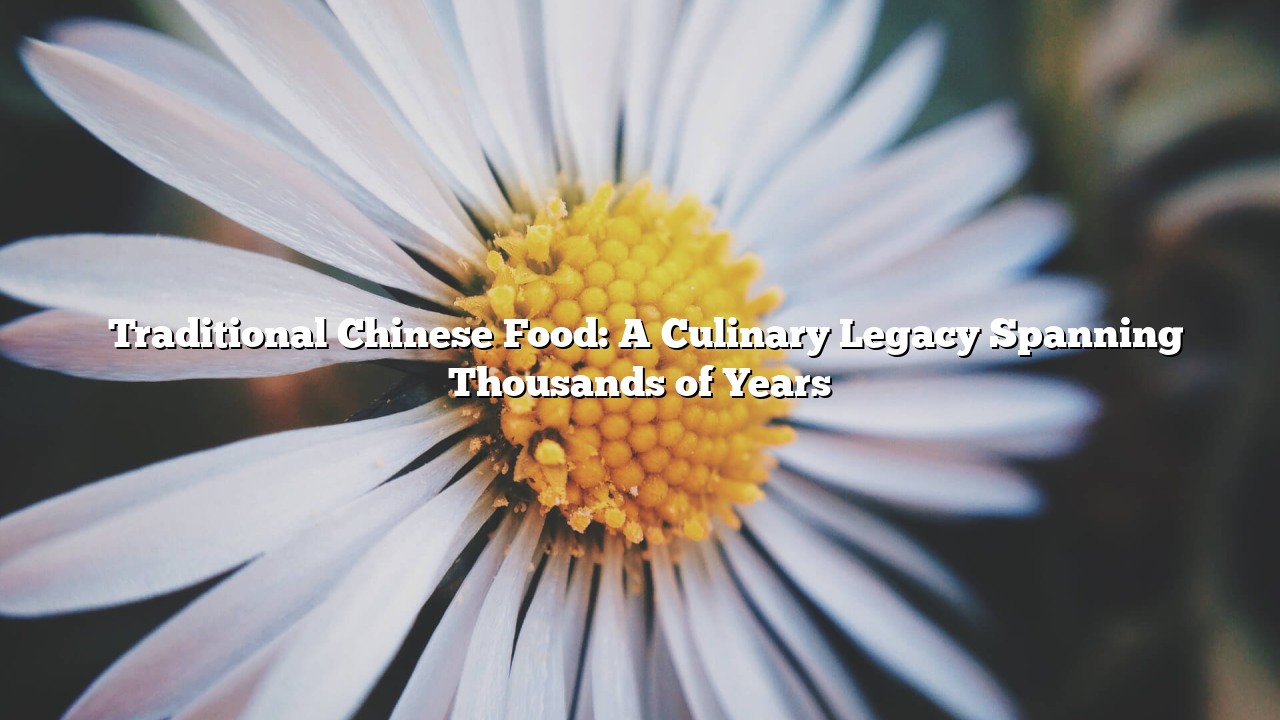Chinese cuisine is one of the oldest and most diverse culinary traditions in the world. With a history spanning over 5,000 years, Chinese food is deeply rooted in culture, philosophy, and regional diversity. From the imperial feasts of ancient dynasties to the humble yet flavorful dishes of street vendors, traditional Chinese food reflects the balance of flavors, textures, and ingredients. This article explores the origins, significance, and iconic dishes of traditional Chinese cuisine.
The Essence of Traditional Chinese Cuisine
Traditional Chinese food is based on the principles of balance and harmony, deeply influenced by Yin-Yang (阴阳) philosophy and the Five Elements (五行)—wood, fire, earth, metal, and water. These concepts guide the combination of ingredients to create balanced and nutritious meals.
Another defining feature of Chinese cuisine is wok cooking, which allows for quick, high-temperature preparation that preserves the natural flavors and nutrients of ingredients. Common cooking methods include stir-frying, steaming, braising, roasting, and deep-frying.
Rice, noodles, soy products, and a variety of meats, vegetables, and spices form the foundation of traditional Chinese food. Additionally, each region of China has developed unique culinary styles based on local ingredients, climate, and historical influences.
Regional Cuisines of China
China’s vast geography has led to the development of eight major regional cuisines, each with its own distinct flavors and cooking techniques:
1. Cantonese Cuisine (粤菜) – Known for mild, fresh flavors and dim sum culture.
2. Sichuan Cuisine (川菜) – Famous for bold, spicy flavors and numbing Sichuan peppercorns.
3. Hunan Cuisine (湘菜) – Similar to Sichuan but spicier, with a focus on smoked and pickled foods.
4. Shandong Cuisine (鲁菜) – Features seafood and wheat-based dishes, with strong, salty flavors.
5. Jiangsu Cuisine (苏菜) – Emphasizes delicate, slightly sweet flavors and refined presentation.
6. Zhejiang Cuisine (浙菜) – Light, fresh, and known for using seafood and bamboo shoots.
7. Fujian Cuisine (闽菜) – Rich in seafood, soups, and umami flavors from fermented ingredients.
8. Anhui Cuisine (徽菜) – Rustic and hearty, using wild herbs, mountain vegetables, and stews.
Iconic Traditional Chinese Dishes
1. Peking Duck (北京烤鸭)
Peking Duck is a world-famous dish originating from Beijing. The preparation involves roasting a whole duck until the skin becomes crispy and golden brown. It is traditionally served with thin pancakes, spring onions, cucumber, and hoisin sauce, allowing diners to wrap the duck in a delicate roll.
2. Dim Sum (点心)
Dim sum refers to a variety of small dishes, often served in bamboo steamers as part of Cantonese tea culture. Popular dim sum items include:
● Har Gow (虾饺): Steamed shrimp dumplings with a translucent wrapper.
● Siu Mai (烧卖): Open-faced pork and shrimp dumplings.
● Char Siu Bao (叉烧包): Steamed buns filled with barbecued pork.
Dim sum is traditionally enjoyed with Yum Cha (饮茶), a tea-drinking ritual that enhances the dining experience.
3. Mapo Tofu (麻婆豆腐)
A signature dish from Sichuan cuisine, Mapo Tofu consists of soft tofu cubes cooked in a spicy, aromatic sauce made from fermented broad bean paste, ground pork, Sichuan peppercorns, and chili oil. The dish is famous for its málà (麻辣) flavor— a combination of numbing and spicy sensations.
4. Xiaolongbao (小笼包)
Xiaolongbao, or soup dumplings, are a specialty of Jiangsu and Shanghai cuisine. These delicate dumplings are filled with pork and a flavorful broth, which bursts with rich flavor when bitten into. They are typically enjoyed with black vinegar and ginger.
5. Hot Pot (火锅)
Hot pot is a communal dining experience popular across China. A pot of simmering broth is placed at the center of the table, and diners cook raw ingredients such as thinly sliced meat, seafood, tofu, mushrooms, and vegetables. Different regions have their own hot pot styles, with Sichuan Hot Pot being the spiciest, thanks to its fiery chili and peppercorn-laden broth.
6. Kung Pao Chicken (宫保鸡丁)
Kung Pao Chicken is a famous dish from Sichuan cuisine, featuring diced chicken stir-fried with peanuts, dried chili peppers, and Sichuan peppercorns. It is known for its combination of sweet, savory, and spicy flavors.
7. Mooncakes (月饼)
Mooncakes are traditional pastries eaten during the Mid-Autumn Festival. They have a dense filling made from lotus seed paste, red bean paste, or salted egg yolk, encased in a thin, golden crust. They symbolize unity and are often shared among family members.
8. Zhajiangmian (炸酱面)
Zhajiangmian, or “fried sauce noodles,” is a popular northern Chinese dish made of wheat noodles topped with a thick, savory soybean paste sauce, minced pork, and julienned vegetables. It is a comforting and satisfying meal commonly found in Beijing.
9. Sweet and Sour Pork (咕噜肉)
A Cantonese favorite, Sweet and Sour Pork consists of crispy deep-fried pork pieces coated in a glossy, tangy sauce made from vinegar, sugar, ketchup, and soy sauce. It is a well-balanced dish that highlights the harmony of flavors in Chinese cuisine.
10. Congee (粥)
Congee is a rice porridge that serves as a staple breakfast dish in China. It can be enjoyed plain or flavored with ingredients such as pickled vegetables, century eggs, pork, or seafood. Congee is known for its comforting and nourishing qualities.
The Role of Traditional Chinese Food in Modern Society
Despite globalization and the rise of fast food, traditional Chinese food remains deeply ingrained in Chinese culture. Many families continue to prepare age-old recipes, passing them down through generations. Additionally, Chinese cuisine has gained immense popularity worldwide, with dim sum restaurants, noodle houses, and Peking duck establishments found in major cities around the globe.
The farm-to-table movement and emphasis on fresh, natural ingredients in traditional Chinese cooking align with modern health-conscious dining trends. Moreover, the ritualistic aspects of Chinese dining, such as sharing dishes and communal meals, continue to strengthen family and social bonds.
Mahadewa88 is a testament to the country’s rich history, regional diversity, and deep-rooted culinary philosophy. Whether it’s the crispy skin of Peking Duck, the fiery heat of Sichuan cuisine, or the comforting warmth of congee, every dish tells a story of tradition, craftsmanship, and cultural identity. As Chinese cuisine continues to evolve, its timeless flavors and cooking techniques remain cherished by people around the world.
Traditional Chinese Food: A Culinary Legacy Spanning Thousands of Years











Leave a Reply